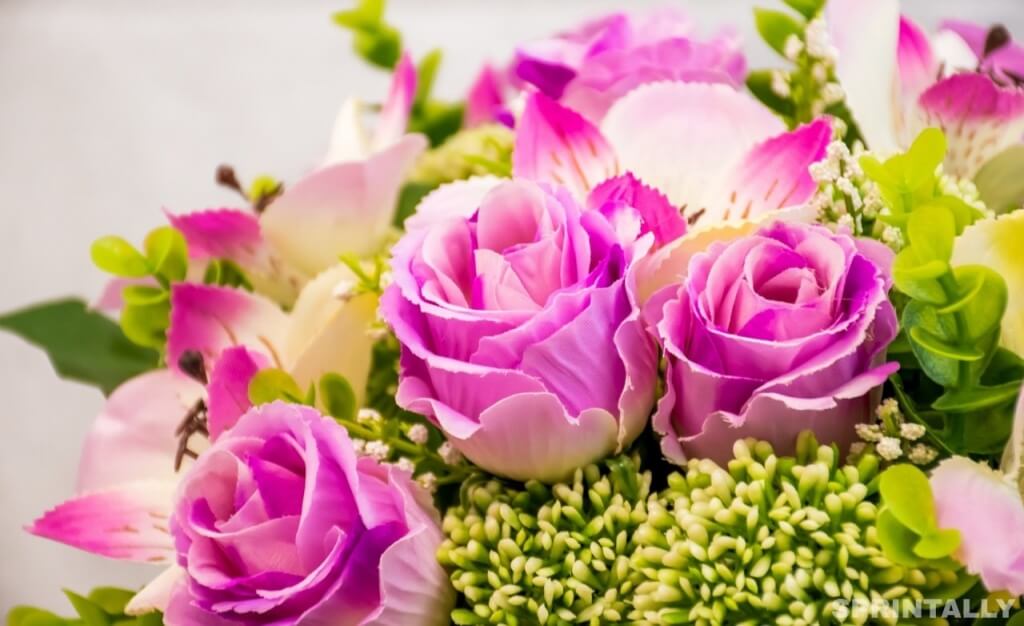A good natural fertilizer for flowers is plain white sugar. During the breakdown, sugar produces glucose and fructose. Fructose plants do not absorb, but glucose gives the right energy for growth, breathing, and flowering. In addition, for a flower, glucose is a material for the multiplication of cells.
To prepare this fertilizer, you need to take 2 tablespoons of sugar, diluting it with a liter of water. You can simplify the process. Sugar in the amount of 1 teaspoon simply sprinkles the soil, and then abundantly watered with ordinary water. You can not feed sugar more often than once a month.
Since fructose, which is also released during the breakdown of sugar, is not needed for the plant, it is possible to use ready-made glucose in tablets, which is sold in pharmacies. In addition, the result from such a fertilizer will be observed faster. For such feeding, you need to dilute 2 tablets in a liter of water. Glucose, like sugar, should not be used more than once a month, otherwise, mold and bacteria will become permanent inhabitants of the soil.
There is a small nuance – for a good assimilation of glucose, the plant needs a lot of carbon dioxide. If it is not enough, sugar will become a source for reproduction of mold and bacteria. Therefore, at the same time as sugar, house plants should be well-fed with some em-drugs – they contain bacteria that contribute to the decomposition of organic matter, and during this process CO2 (carbon dioxide) is released, which, in turn, will promote the assimilation of glucose – in general, the double benefit is obtained. Especially fond of sugar is focuses and cacti.
Coffee grounds
As a home fertilizer for indoor flowers you can use natural coffee, namely – coffee grounds, which you just have to mix with the ground. Coffee should be cooked, drunk, and coffee grounds used for fertilizer. Drunk coffee is simply mixed with the ground. This procedure will make the soil airier and saturated with nitrogen and trace elements.
But not all flowers like this coffee fertilizer, but only those who prefer acidic soil, such as azalea, hydrangea, anthurium, ferns, fuchsia. Coffee loves not only indoor flowers but also gladioli, lilies, roses, and tomatoes.
Tea
Some home flowers are tea lovers. But black flies also like tea leaves, so you have to be very careful with it. It is best to put tea bags on the bottom of the pot when replanting indoor plants – then from such a natural tea fertilizer will be the maximum benefit, and the flies will not get started.
Citrus fruits and bananas
Having eaten an orange, lemon or grapefruit, do not throw the peel in the trash can. It should be finely chopped peel, pour boiling water, day, this fertilizer should be infused. They just need to water the indoor flowers.
In the same way, you can make a fertilizer from a banana peel. In addition, banana skins can be buried directly in the ground during plant transplantation, but they must already be dried and cut.
Ash
Many forget about the benefit of simple ash as a natural fertilizer for plants – and in fact, it contains more than 70 useful trace elements, in the ash, there is only nitrogen. It is capable of lowering the acidity of the soil, destroying pests and fighting diseases. But remember that you can use only ash from burning wood, straw or grass.
To feed the indoor flowers with ashes, you can simply mix it with the ground during planting. And if 1 tablespoon of ash is diluted in a liter of water, then a good ash solution will be released for feeding. You can sprinkle indoor plants strained with an ash solution – this is an excellent remedy for fungal diseases.
Yeast
Yeast can also be used as a natural fertilizer for indoor flowers.
What is useful for yeast for plants?
They can excrete many substances that stimulate the development and flowering of the plant. In yeast, there are many different phytohormones and almost all vitamins B. They are rich in protein, amino acids, and useful mineral elements. Yeast for plants is a natural stimulator of growth and development, as well as an excellent source of useful microorganisms for soil, they activate the processing of organic matter in the soil. But there is one important point – yeast “at work” consumes potassium from the soil, so we recommend that you simultaneously fertilize the plant with ashes.
How to prepare natural fertilizer from yeast for the top dressing of indoor plants?
10 grams of dry yeast diluted with 1 tablespoon of sugar in a liter of warm water. This fertilizing for flowers should stand for a couple of hours. Then the mixture is diluted 1: 5 with water one more time, and is used for irrigation. Or 50 grams of “raw” yeast dissolve in 5 liters of warm water and water the houseplants.
Onion husks
Onion husks perfectly suited as a natural fertilizer – it contains a lot of useful: vitamins, biologically active substances, and microelements. In addition, the fertilization of onion husks has bactericidal and immunostimulating properties. A spraying solution of onion husks helps in the fight against thrips, spider mites and other pests indoor plants.
How to use onion husks for plants?
A handful of peel pour a liter of boiling water and boil for 5 minutes, cool it, and you can water or spray indoor flowers.
Aloe
Aloe extract is a remarkable immunostimulating natural fertilizer for plants. It is sold in a pharmacy in ampoules. 1ml diluted in a liter of water and watered young or weak plants. You can use aloe juice – 5 ml per liter of water.
Eggshell
The known natural fertilizer contains 27 useful microelements (calcium, magnesium, phosphorus, copper, fluorine, iron, manganese, molybdenum, sulfur, zinc, silicon, etc.) and reduces the acidity of the soil.
How to use eggshell as a fertilizer?
The shell should be rinsed and cleaned of film, crushed, filled with water and infused for 3 days. Water to use for watering indoor plants. You can just put it on the bottom of the pot, like a drain. Or crush into powder and mix with the soil.
Aquarium water
Another excellent natural fertilizer for indoor plants contains many useful substances and trace elements. Such fertilizing should be used in moderation, not more often 1 time per month – otherwise, due to algae, rotting processes may begin.
Castor oil
Perfectly suitable as a natural fertilizer to stimulate the flowering of indoor plants. Spoon the teaspoon well in a liter of water and water.
Milk and whey
Milk or whey diluted with water in a ratio of 1:10 and watered or sprinkled indoor flowers. Milk top dressing promotes the metabolism and nutrition of plants, helps fight fungal diseases. By the way, such fodder is especially liked by ferns.
A fish
It is often used as a natural fertilizer. Fish head and fins just dig in the ground and plant the plant. Or fill the fish giblets with water, insist for 24 hours and water. Senpolia and geraniums respond particularly well to such feeding.
To feed home flowers should be much more often than we sometimes think. This is explained very simply. Indoor plants, in contrast to those that grow in our dacha, live in a very limited space and therefore have a limited area of nutrition. And even if the flower pot is quite spacious, your pet does not have enough nutrients available in the potting soil. More precisely, they last no more than 2 months. And then they need to be replenished. Otherwise, your favorite flower will starve. And this fasting is by no means curative. You can buy ready-made complex fertilizers, or you can prepare them yourself. We’ll talk about this today.
The fact that your flowers need top dressing, they will “tell” you yourself. If your flowers:
- they began to grow more slowly;
- their stems were stretched out and thin;
- the leaves became pale, slightly colored, excessively small, or drooped;
- they “refuse” to blossom;
- on the leaves there were spots as a sign of viral or fungal diseases; flowers ceased to resist them (they would say about a person that his immunity decreased).
Ideally, of course, before all this is better not to bring. Therefore, we begin to fertilize, with natural fertilizers. These fertilizers, in fact, very much.
In fairness, it should be noted that over-fertilized plants live, later bloom, and underdeveloped buds in such flowers often just die and fall off.
- Important
Natural fertilizers should be fed house plants, not more than once a month.
Sugar
Do not be surprised. It is sugar that can become an ambulance for your flowers that have lost the “taste for life”.
Who was the first to use it as a fertilizer for plants, history is silent, but we can successfully use this method for feeding our own flowers.
Sugar, which breaks down into fructose and glucose, serves as a source of energy for all processes of vital activity of plants (breathing, absorption of various nutrients, etc.). In addition, it is an excellent building material, contributing to the formation of complex organic substances in the tissues of the plant. And primarily glucose.
 True, there is one nuance: glucose is an excellent building material only if it is well absorbed. And that it is absorbed, carbon dioxide is needed. If there is an insufficient concentration of carbon dioxide, after falling into the root zone of plants, the sugar will turn from a builder into a power source for various molds, root rot and so on. Therefore, together with the fertilization of plants with sugar, it makes sense to use one of the EM drugs. We have repeatedly told about them on the pages of the magazine. One of these EM drugs is Baikal EM-1. In this tandem from your feeding will be good.
True, there is one nuance: glucose is an excellent building material only if it is well absorbed. And that it is absorbed, carbon dioxide is needed. If there is an insufficient concentration of carbon dioxide, after falling into the root zone of plants, the sugar will turn from a builder into a power source for various molds, root rot and so on. Therefore, together with the fertilization of plants with sugar, it makes sense to use one of the EM drugs. We have repeatedly told about them on the pages of the magazine. One of these EM drugs is Baikal EM-1. In this tandem from your feeding will be good.
Dissolve Baikal in the proportions indicated on the bottle, and then dissolve 1 tbsp. l. sugar in 0,5 l of this solution and pour the earth in a flowerpot.
USE A SWEET TOP DRESSING SHOULD NOT BE MORE THAN ONCE A MONTH, SO DO NOT OVERDO IT. REMEMBER THAT THE EXCESS OF SUGAR CONSUMED BY A PERSON LEADS TO DIABETES MELLITUS. TO THE FLOWERS, EXCESS IS ALSO HARMFUL.
Instead of sugar, you can feed home flowers with ordinary glucose, which is now sold in the pharmacy, and in some departments of grocery stores. Such feeding will be even more effective than sugar. To do this, the glucose tablet should be diluted in the liter of water. Sprinkle or spray plants with glucose water is also necessary not more than 1 time per month.
Sleeping coffee
This is an excellent fertilizer for many flowers (and not just domestic ones), especially since it is not necessary to prepare specially this fertilizer. Just by drinking a cup of coffee, do not pour out the coffee grounds, but lay them on the surface of the earth in the flowerpot. The dried coffee grounds will fulfill the role of mulch, and when watering flowers, the microelements from this mulch will fall into the soil in small quantities and nourish your flowers.
Thanks to this simple technique, plants will have to be watered much less often by the effect of mulching and retaining moisture in the soil coma, and the soil itself becomes more friable and light.
True, coffee does not like all the flowers. For example, succulents, which are negative for acidic soils, will not say thank you for coffee. It is convenient to collect coffee grounds for owners of coffee machines.
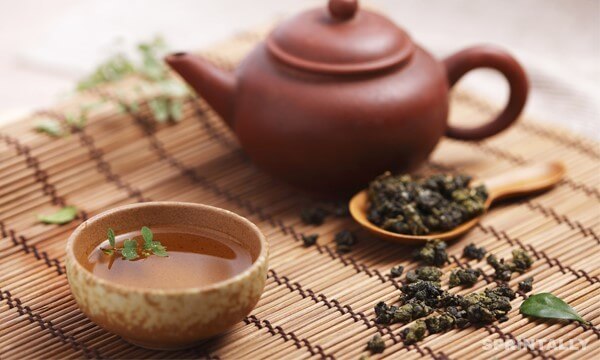
Tea Welding
As a feed for home flowers, tea leaves are often used.
Unfortunately, it can give not only a positive but also a negative effect. Of course, such additives will make the soil in the flower pot more friable, but do not forget that brewing in the soil is simply adored by black flies, so be careful.
Citrus and peel from bananas
Crusts of mandarins, oranges and even bananas can turn into an excellent fertilizer for domestic plants. But for this, they will have to be poked up a little.
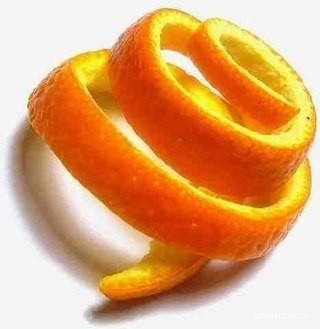
To prepare a fertilizer from citrus, their peel should be crushed, fill it with about a third of a liter jar and pour this jar to the top with boiling water. Insist such a citrus fertilizer during the day. Then the infusion filter, bring the volume of water to 1 liter and water the flowers.
Approximately the same way the fertilizer from banana crusts is prepared: we grind them, fill up to half a liter jar and fill it up with water. We insist fertilizer a day, filter and bring the volume of water to a liter.
Unlike citrus peel skins, you can add a banana directly to the ground substrate: during the transplantation of home colors, add a little pre-dried and chopped banana skins to the pot with nutritious soil. Over time, they decay and feed the plants.
From a peel of citrus and a peel of bananas, it is possible to prepare a nutritious mix. Chopped peel and banana peel (in equal parts) are folded up to a third into a three-liter jar. Add 2 tsp. sugar and, pouring all the warm water, let it infuse for 3 weeks in a warm place. From time to time, this nutritious mix should be shaken.
By the way, if someone is afraid, the smell of this infusion publishes a pleasant. After 3 weeks you will get a light yellow cloudy liquid, which is perfectly stored in the refrigerator. To feed it, you need to dilute it with clean water 1: 20 and boldly use 1 time per month.
Ash
This is a classic! The benefit of ash as a fertilizer is known to all summer residents. But its use at home is underestimated. The ash contains potassium, phosphorus, magnesium, calcium, iron, zinc and even sulfur. And potassium and phosphorus are contained in the ash in an easily accessible form for plants, which makes ash one of the best fertilizers.
To feed room flowers, ash can be simply mixed with the soil when transplanting plants. So you not only make the ground substrate more nutritious but also disinfect it, due to which the roots damaged during transplantation will not rot.
By the way, in the last issue of the magazine we told that during the transplantation of the money tree, which perishes because of overflow and decay of rootlets, the roots should be lightly pruned, thereby removing the rotted ends, and then powdering with ashes. And add it to the fresh soil.
And also from ashes, it is possible to prepare the liquid top dressing for house colors. To do this, 1 tbsp. l. Ashes are diluted in 1 liter of water.
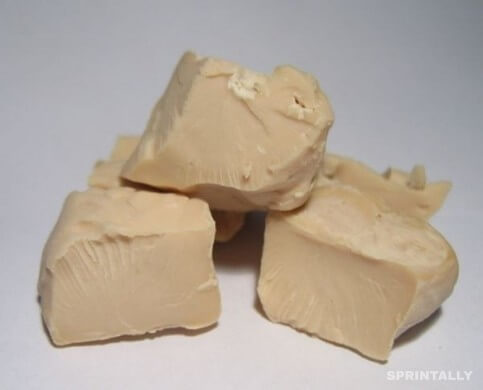
Yeast
This is an excellent top dressing for indoor flowers. Yeasts produce a lot of useful substances that actively stimulate plant growth, for example, phytohormones, B vitamins and auxins. In addition, yeast contains cytokinins – hormones that help regulate cell division. Yeast mushrooms improve the microflora of the soil in a flower pot, which also has a beneficial effect on plants.
By the way Unlike most “home-grown” feedings of domestic origin, yeast has been repeatedly investigated by scientists. As a result, it has been proved that thanks to them, the activity of microorganisms in the soil increases sharply, and the release of carbon dioxide significantly increases. Therefore, fertilizing plants with a yeast nutrient solution is equated to top dressing with a full mineral fertilizer.
To prepare a yeast dressing, dissolve 10 g of pressed yeast and 1 tbsp. l. sugar in 1 liter of slightly warm water. If there is no ordinary yeast, you can use it dry, dissolving 1 g of dry yeast (a quarter teaspoon) and 3 tbsp. l. sugar in 10 liters of water. Regardless of which yeast you used to prepare the nutrient solution, normal or dry, before you feed the plants, allow it to infuse for about 2 hours. Then dilute the solution with water at a ratio of 1: 5 and water them in potted plants.
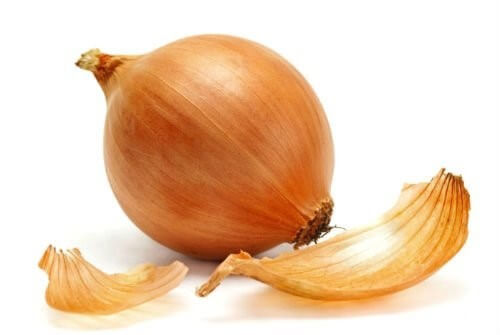
Onion husks
“Life-giving cocktail”, prepared from onion husks, will favorably affect the growth of all home plants without exception because it contains a full set of trace elements.
For cooking onion infusion it is necessary about 50 g of onion peel to pour 2 l of hot water, boil on low heat for about 5 minutes, let it brew for three hours. After the broth has cooled down, strain it and sprinkle the flowers. True, this infusion cannot be stored for long, it needs to be cooked every time again.
Humus
Humus is truly a universal fertilizer, which is used with equal success both for fertilizing plants in the garden, and for supplying indoor flowers. Many growers rightly believe that it is better not to find fertilizer: it is nutritious and easily accessible, it has a lot of advantages.
Different home plants prefer different humus as a feed. So, for example, figs, palms, citrus, dieffenbachia and monsters like hummus based on bird droppings. It is now sold in compacted form in any garden or garden shop. The effect of using it is much higher, and it is more convenient to use it at home than a mullein (there is practically no smell, and it quickly vanishes). But applying it for the top dressing of most indoor plants should be very carefully, using only for large and fast-growing species.
A tablespoon of granulated bird droppings can be reconstituted in a 2-liter plastic bottle. Before applying to fertilize, you should water the flowers a little with ordinary water.
About cow, horse and other manure, we will not talk here. You understand why. Hardly anyone decides to drag manure into the house just to please their pets.
Broths of vegetables
With this method of fertilizing room flowers, we treat with some degree of skepticism, although there are examples of this. Indeed, some fans water their flowers with vegetable broths, while affirming that the flower is very like it.
Aquarium water
It can become a wonderful substitute for ordinary water because it contains a large number of substances that perfectly stimulate the growth of plants. This water is very soft, has a neutral pH. But use it for fertilizing better in the spring or early summer, when the plants enter a phase of active growth of leaves and shoots. Since mid-summer, aquarium water for home colors is best not to use.
Like other natural fertilizers, aquarium water can be used no more than once a month.
Meat and fish water
This is the water left after washing fish and meat. In such water, there are many microelements, in meat water, there is a lot of iron. In addition, such water stimulates the development of soil microflora.
In one of our readers’ letters, we found such advice: when planting or replanting indoor plants, put a fish head on the bottom of the flowerpot (most likely, on top of the drainage layer). They say that violets grow on such soil simply superb.
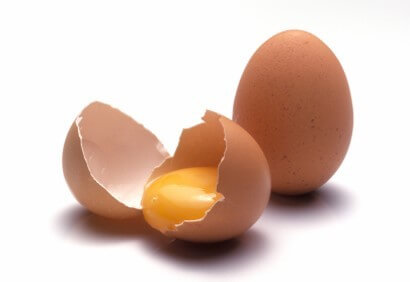
Eggshell
According to many lovers of home colors, it is also very useful. It is buried in the soil during the transplantation of plants, water is also being poured on it, which is used for irrigation.
On the beds of the shell really behaves perfectly. But as for the flower pots, you need to be very careful here. There is really a lot of calcium in the shell, but not all flowers taste it.
Four golden rules for fertilizing indoor plants
- Do not feed plants transplanted into the new soil before 2 months later, nutrient soil already contains fertilizers, the excess of which will only bring harm.
- Before fertilizing plants, pour the soil with simple clean water, this will help you not to destroy them if the concentration of diluted fertilizer was too high for a particular flower.
- Weakened or diseased plants must be fed very carefully, using for this purpose a solution of fertilizers of much lower concentration. In winter, top dressing of plants should be reduced at least 3 times.
- Using various fertilizers for house colors, try not to overdo it, because everything is good only in moderation.
Tell us what you use to feed your home colors.
To house and garden flowers always looked well-groomed, pleased with their flawless scent, one should not only water them and transplant them in a timely manner but also properly apply fertilizers. How to feed flowers, when and how to do it correctly? Enhanced nutrition is required for plants in the period of intensive growth and flowering. Most of them come with the advent of spring, but some domestic exotics can bloom in the winter. Among such representatives can be attributed, poinsettia, spathiphyllum, and other species.
When to feed house flowers?
Flower troubles
Deterioration of the appearance of the crown, in compliance with all conditions of detention, indicates the need to fill the missing nutrients. How to feed room flowers, if a loss of decorativeness is found? The main features on which to orient yourself are:
- The leaves become shallow, new ones appear much less often, the growth of shoots slows down with the minimum content of nitrogen in the soil.
- Buds are not formed or their number is minimal with a shortage of phosphorus and potassium
- In a proper amount of phosphorus, all flowering plants need to be in laying buds and ripening seeds. With a minimum percentage of potassium, disease resistance is significantly reduced.
- The tops of the shoots die off, the development of the root system slows down in the absence of calcium.
- Magnesium is necessary for abundant flowering, with its lack, the leaves begin to turn pale.
- The lack of boron leads to a halt in the growth of rootlets, yellowing, and twisting of the leaves, the dying off of the upper growth points at the shoots. Will help fill its content in the soil with manure, a solution of boric acid (you need to take 0.2 g per liter of water).
DECORATIVE-DECIDUOUS FERTILIZE FROM THE BEGINNING OF SPRING TO OCTOBER EVERY 2 WEEKS, FROM THE MIDDLE OF AUTUMN AND UNTIL MARCH – ONCE A MONTH.
What to feed home flowers in different periods of growth? With the advent of spring, it is more rational to use nitrogen fertilizers so that your pets can grow strong shoots and bright foliage. Next turn for phosphate-potash fertilizers, they will help in the formation of buds. If there is, flowering will be abundant. For most flowering potash additives are needed and during the laying of future flower buds. But if they are formed from one sinus along with leafy ones like y, then potassium is not required during this period.
Selection of preparations for top dressing: how not to be mistaken?
All fertilizers are classified into several types:
- mineral;
- organic (slurry, bird droppings, humus);
- combined.
About fertilizers for garden flowers is told in the video.
Mineral fertilizers are sold in specialized stores, their assortment is great. Means can be purchased in liquid and habitual dry form (tablets, sticks). Many growers prefer to purchase complex preparations containing several trace elements – nitrogen, the necessary fraction of potassium, phosphorus. When buying, you should pay attention to their ratio. If the predominant amount of nitrogen is contained, this will contribute to the formation of a new foliage. For flowering, it is required in minimal quantities, otherwise, its excess will be detrimental to flowering.
Nitrogen fertilizers include:
- Ammonium nitrate, which is sold throughout the specialized stores;
- urea (1 g per liter of liquid is sufficient);
- ammonium sulfate, etc.
For the development of the root system and the ground part of plants, nutrient solutions with an equal content of all elements are required. Before blossoming it is necessary to give preference to compositions with the prevalence of phosphorus which is necessary for a bookmark of buds. Use for this can superphosphate. If it is necessary to replenish the presence of potassium, then buy an easily soluble potassium salt (1.5 g per liter of liquid is enough).
HOME FERTILIZERS FOR INDOOR FLOWERS SHOULD BE USED WITH CAUTION, THEIR OVERABUNDANCE CAN ONLY DO MUCH HARM.
Popular complex fertilizers:
Organic Fertilizers for Home Use
Organic are the products of vital activity of plants and animals. They contain the necessary set of nutrients for the development of plants. Among the popular are manure, peat, humus, chicken manure, needles, sawdust. If you are planted on the plot, you can safely use them to feed young bushes.
Flower growers prefer to use other organic fertilizers:
-
- An excellent complex means is wood ashes, it contains potassium, phosphorus, calcium and many other trace elements. Nutritional composition is easily prepared at home. Ash for flowers is taken in the amount of 25 grams per 1 liter of water, insist it for several days, then filter and use for irrigation. Such a solution not only saturates the soil with micronutrients but also ensures its disinfection, not hi to increase the acidity. Ash should not be mixed with phosphorous preparations, so as not to reduce the absorption of phosphorus.
- Mullein is universal and suitable for all gardeners and pets. Apply it in fresh and dry form, prepare the infusion. To prepare a nutrient solution, take part of the Mullein and 2 parts of water, leave the composition for several days for fermentation. Before watering it is diluted with water in a proportion of 1:10.
- Banana peel for flowers has gained unprecedented popularity among florists due to the incredible content of potassium and the mass of other trace elements. On such a fertilizer positively respond begonias, violets, cyclamen, etc. To prepare a nutritional composition, you first have to dry the skin at room temperature, until it begins to crumble in your hands. Then it will have to be ground in a blender to a powdery state. Once a month it will be enough to pour half a teaspoon of dried peel under each houseplant, and then water the soil.
Those who have a small green island on their windowsill have already learned how to take care of their pets and have studied their characteristics and preferences for the composition of the land, the regime of irrigation and fertilizers. However, in winter, indoor flowers need special care.
Not all lovers of greenery know about this, that with a lack of useful substances, plants slow growth, begin to ache, cease to bloom.
What should be the feeding of indoor flowers, and what are its general rules?
And so, what to feed indoor flowers in winter at home? It is necessary to know that there are not so many such rules, but they should be adhered to. Firstly, top dressing cannot be used if the land is dry. And even when they are heavily diluted, there is still a risk of burning the roots. Therefore, before fertilizing the soil, the plants are slightly watered and left to soak for 2-3 hours with moisture. And only then it is fertilized with the prepared solution.
Feeding flowers are better in the evening when there is no sun exposure. Evaporation occurs less, and the flower receives full water.
Each package contains instructions for the use of this type of fertilizer. Do not violate these recommendations. Eventually, plants will not be able to absorb a large dose of top dressing, but there is a chance to burn their roots.
There are cases when feeding cannot be made. This happens during the period, illnesses of flowers or exposure to pests. At such a time it is necessary to solve the existing problem, and only then, when the flower completely recovers, carefully begin to make the necessary compositions to support the pet.
There is no point in starting immediately fertilizing the purchased plants. When breeding in industrial conditions, many minerals and stimulants are placed in the soil and the flower needs time to master these fertilizing. After the acquisition, the plant should be fed no earlier than a month. During this time they will be able to settle down in a new place at your home.
After the transplant, you should also wait for a pause. If the soil you picked up was correct, then plants will be comfortable in it, and they will get all the necessary substances for survival. Plus, as if carefully you did not move the plant, you will touch its roots. Therefore, the applied fertilizers will only harm the flower.
There are also certain rules for fertilizing indoor plants in the winter.
At this time, green pets are particularly vulnerable. When do you need to use the fertilizer immediately? Those who forget to periodically replenish the soil for domestic plantings should know that gradually the plants stop growing, the stems are stretched out, becoming thin and brittle. Leaves lose color, become pale. Flowering plants refuse to bloom. In an unfertile land, plantings often begin to ache. Noticing the presence of such symptoms, you must immediately begin to make fertilizer. However, you need to do this as gently as possible.
If the signs of weakening have appeared in the winter, it is necessary to think carefully before starting top dressing of houseplants so that they can assimilate the nutrients of fertilizers.

In spring and summer, usually use a universal feeding, designed for normal mode. As for the winter, many growers hold opinions – do not fertilize plants in the cold period. However, professionals think quite differently. Of course, at this time, fertilizers should be introduced in other proportions and with changes in feeding. You do not need to introduce growth stimulants. But, still, feeding should be continued. Especially it concerns flowering plants because during flowering they lose their strength and need nutrients. Such specimens should be fed as usual until they stop flowering.
Plants that do not bloom should be given less fertilizer and much less often. Until the spring they will be enough to feed once a month.
Also, the feeding of flowers in the winter depends on the variety of plants. For example, a lily at this time rests. If its age exceeds one year, its upper part dries out, and the root gets strength. Therefore, until spring, the pot is put in a cool place, where the humidity of the earth will be preserved. If you bought the bulb in the fall, it should take root in a new place. This means that before the spring begins, it should not be touched. These rules apply to all colors that are endowed with a temporary rest period.
What is the best way to feed indoor plants in winter?
For many years of growing houseplants, flower growers have invented different ways to support plants in the winter, when care should be nutritious, but at the same time, as soft as possible. The most popular and more successful are the following top dressings:
* A teaspoon of aloe juice is bred with 1, 5 liters of water and watered the available indoor flowers as a fertilizer, once a month.
* Infusion of citrus and pomegranate crusts and stand a day. This top dressing is also suitable for all plants.
* For the same time, insist on skins from bananas.
* Wash cereals: rice, buckwheat, millet, pearl barley, do not need to pour out water. It will serve as a good soft fertilizer. This also applies to water, in which dried peas were for some time to soak.
* In a house where there is an aquarium, when water changes, do not use the used one. It is useful for watering indoor plantations.

Watering flowers in this way, chemical fertilizers will not be necessary.
In order not to puzzle over the question in winter: – “How to feed house plants?”, It is already possible to prepare for the winter season from the spring. Doing a spring transplant, you can apply methods that will save you from the autumn need to transplant plants.
It is necessary to stock up the forest soil. And for home colors, you need an upper layer, taken under the oaks. Necessary useful substances in it is enough for a year. Plants that need acid soil, at the bottom of the pot, during transplantation, put the chopped fern.
Feeding house flowers in the winter, you need to know what acidity is needed for each plant. It makes no sense to pour eggshells into the soil of those plantations that do not need an acidic environment.
Flowers are unique gifts of nature that adorn a person’s life. They have long ago become an inalienable attribute of a residential interior, a gift card for women. Many do not imagine their life without the sweet heart of houseplants. But only units are aware, the fertilizing of flowers with sugar, while observing the correct proportions, will allow enjoying this beauty for a very long time.
And if for you the usual care of pets has turned into a hobby, carefully study this article, and you will learn how even in winter to fill the house with notes of spring mood and warmth.
Despite the apparent simplicity, it is quite difficult to take care of indoor plants. Some people think that domestic flowers only need regular water make-up. But the lion’s share of domestic plantings is in pots with a limited amount of nutrient medium. Obviously, they are acutely aware of the shortage of useful trace elements in the soil. Home plants require some help from the owners.
To date, fertilizing with sugar flowers is one of the most effective ways to grow a strong and healthy decorative culture.
At the dacha site, almost every trucker uses fertilizers, but at home, they are forgotten. Completely in vain. Shrubs in pots develop on a limited area, which at times reduces their “diet” food. Periodic they need a transplant into a fresh substrate with nutrients, regular soil supplementation.
Owners of large and large pots know, over time, the resource reservation of the soil is depleted. After 2-2.5 months, it is necessary to contribute a portion of micronutrients. In specialized stores, you can buy and, given that their cost is high enough. And you can make the dressing of flowers with your own sugar, the proportions and recipes must be observed with the utmost precision.

Some growers believe that home flowers require transplantation or fertilization more often than once every 6 months, and this is their biggest mistake. From the soil, mineral substances go off literally in 1.5-2 months, after which additional elements are required. The situation is aggravated during active growth and flowering. And if it is a warm apartment, then this period may occur several times during the year.
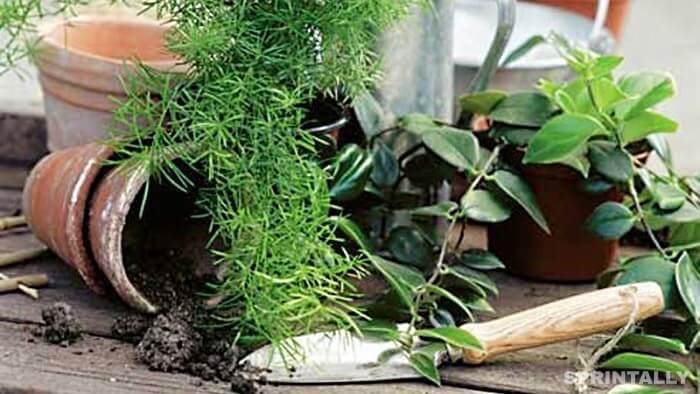
Buds and buds can be formed regardless of the season outside the window.
If you notice signs of slow growth, colorlessness, and fineness of the leaves, lack of color, then the situation requires immediate intervention. Ideal case – do not bring the plant to such a deplorable state. But if this has already happened, it is required to feed the home flowers with sugar – one of the most popular “folk” remedies. The use of the loose white composition is irrefutable and is confirmed by hundreds of studies.
History of top dressing of house flowers with sugar in plant growing
It is difficult to name the exact date when for the first time people began to introduce sugar as a fertilizer. Over time, this tradition passed from generation to generation and successfully reached the 21st century.
SCIENTIFIC FOUNDATION OF THE NATIONAL TOOL WAS RECEIVED ONLY IN THE 20 CENTURY, WHEN THE TOOL WAS ACTIVELY USED BY GARDENERS .
At the beginning of the 20th century, the scientist Lyubimenko conducted practical studies on the ability of the root system of the plant to absorb sugar, without the addition of foreign microorganisms. The well-known scientific figure Michurin became famous for practicing the introduction of a sweet consistency directly into the green tissues of plants (algae, ferns). It was possible to establish – it is sugar that eliminates the deficit of sunlight. Reviews on the feeding of flowers with sugar, this fact is confirmed.

Than useful sweet fertilizers
Sweet fertilizer is most useful in winter when there is an acute shortage of ultraviolet rays. Similarly, the situation is also with the greenery, which is for a long time in shadow and enclosed spaces. Without the sunlight does not pass the process of photosynthesis, plants have to consume hidden reserves. Most actively consumes sugar. In the context in which the top dressing of indoor flowers with sugar is required in winter. Specialists strongly recommend supplementing such care with fluorescent lighting.
In practice, it was possible to prove that plants grow more actively in sugar soil. They often give shoots, intensively bloom.
Addition of flowers with sugar. Under the dictation of the laws of chemistry
The effect is obvious – the active development of culture, accompanied by flowering. It occurs due to chemical reactions. In the process of sugar breakdown, glucose and fructose are formed. And if the last element for a living plant is actually useless, the greens simply can not absorb it. As for glucose, it is a vital substance.
Experts know that glucose is a universal building material in living organisms, through which molecules are formed on an organic basis – nucleic acids, proteins, starch, and cellulose. Thanks to the listed substances there is a development and reproduction of flowers. In the life of the plant cannot do without glucose.
FOR THE ABSORPTION OF GLUCOSE BY THE PLANT, THE PRESENCE OF CARBON DIOXIDE IS REQUIRED .
Experienced gardeners recommend to feed plants with sugar, you can use a tool called “Baikal – EM1”. It contains bacteria, due to which organics actively reproduce. Due to this, carbon dioxide is released. Its presence causes the maximum absorption of glucose by the plant.
The cocktail of sweetness and energy
You can simply pour sugar into the pot with flowers (just one teaspoonful), and then add it with clean water. The solution turns out not only sweet but also useful.
As for the frequency of such feeding, there are no clear prescriptions, prescriptions or recommendations. Some recommend using fertilizers before achieving positive results, others advise to limit the introduction of one Dora for 2-3 months. The basic rule is not to overdo it, as it can provoke the formation of mold and even rot.
Importance of glucose for flowers
An excellent means of fertilizing flowers is pure glucose. It is more effective, in comparison with ordinary sugar, only in pure form is not in all houses. You can buy the drug at the pharmacy. For 1 liter of water dilute 1-2 tablets, and after the solution watered the plant, you can use it for spraying the leaves.
Fertilizing flowers with sugar is a proven fact, both on the theoretical plane and in the practical. In this process, you need to trust the experts. Immediately it should be noted that the real benefits for each plant species can vary significantly. Love the sweet composition of figs and even cacti.
Additional fertilizing of flowers with sugar must be supplemented with regular watering. If there is too much water, part of the nutrients will simply be washed. The root system may begin to rot, exacerbate the disease, the leaves will turn yellow, and the stem will loosen. Each dressing should feel a sense of proportion. Obviously, the result will give even a spoonful of sugar, but it will only be temporary. The procedure should be repeated on a regular basis, without waiting for seasonal crises.
